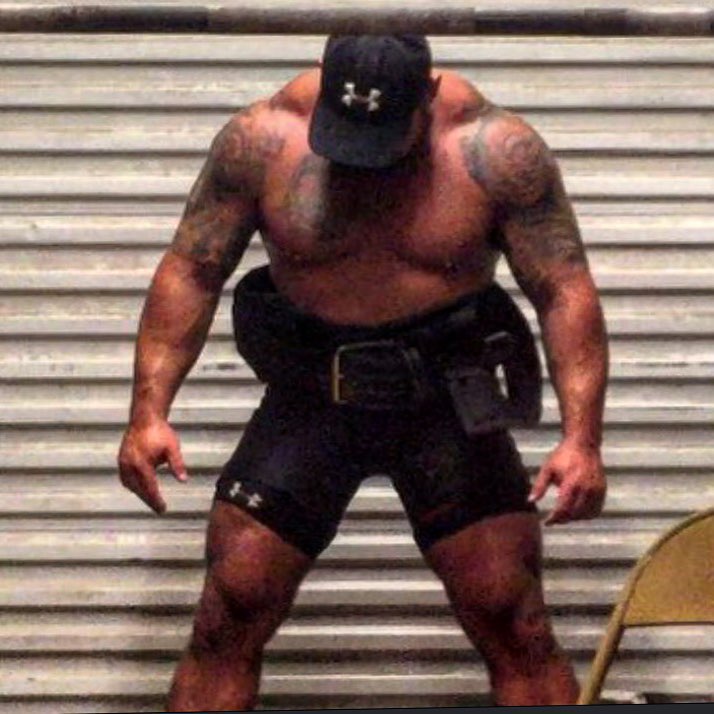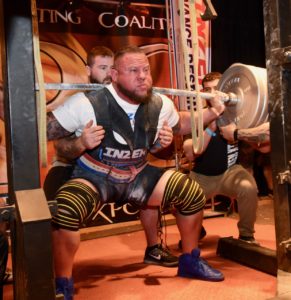
25 Jan AMRAP – Why I Don’t Like To Throw This Around For Just Anyone
By: Brian Carroll
AMRAP can be the end of you if you don’t use it correctly, trust me.
What Is AMRAP?
Most refer to this as many reps (or rounds for CrossFit) as possible, right? This mean’s going to failure, correct? Going until the body quits bro! ALL OUT all the time – go big or go home.
No, not really- with the 10/20/Life philosophy, we rarely miss lifts in the gym, we don’t kill our bodies. However, we will fatigue our muscles to failure, at times.
[wa-wps]There is a huge difference between getting smashed between a barbell and the floor on a squat and not finishing a tricep extension or a DB press due to fatigue.
Do you see the difference? One is simply ‘petering out’ while the other is all out failure with many potentially dangerous consequences along with joint and CNS implications. Add to this the fact that injuries will happen, especially to the back, when you are under fatigue and when your muscles get loose.
“But BROAN, no failure in training, right? EVER?”
Well, in a sense. It depends what you would constitute as failure? Straight out missing lifts and getting crushed, stapled and smashed, or are we talking going until form breaks apart and you can’t correctly do any more due to muscle fatigue and you shut it down there, safely?
Here is the caveat – we are training for strength, not hypertrophy. I’m not even close to an expert on bodybuilding, physique shaping or getting someone to a legit 5% BF. I would also never pretend to be, but I’m not an idiot. We do need to build muscle mass by attacking weak points, and that’s why I advocate a “bodybuilding” day via the 4th day, or as some of us call “fluff and buff” work.
That being said, I do know something about strength training. A little, but I do know something and have outlined a pretty solid philosophy with 10/20/Life.
If you’re going to use AMRAP in your strength training, use these 5 tips when you decide how to use this in your programing (which I do advocate in 10/20/Life, but mainly for bodyweight movements). I do like the idea of doing this, but keep the following in mind for your strength training goals.
I can name people who cannot do this in my experience as well as those who are the exception in my opinion.
1. Avoid using on the main lifts. For me and my philosophy, this kind of goes without saying but I must still say it. Do not use this on your main work with the squat, bench, dead or OHP. This is the basis of CrossFit and not a good idea if you want to stay healthy and have longevity in your sport. Danny Vega is someone who can maintain the same form on the main lifts and not deviate. Beth Thomas is another one that is the same way. Here’s the thing though – both are the same example on point 5 as to what you should be doing vs. what you’re sometimes thought you need to do or are told to do.
2. Avoid using this with a barbell in your hands or on your back. Why? Because going to failure with a barbell in your hands other than specific endurance training that you ‘must’ do for your specific event is dangerous! This dove-tails onto point #1 and most people should avoid this at all costs. Otherwise, you are doing CrossFit and you know how we feel about doing snatches, OHP, bench presses, squats and deadlifts for as many reps as possible for time. It’s a great recipe for disaster. It’s almost impossible to hold form for this amount of time and for so many reps over and over. Lifts like the snatch and clean are certainly meant for highly skilled athlete who grew up in weightlifting and not to mention, as Stuart McGill says, weightlifting picks them, not the other way around. Genetics play a huge part in everything, especially Olympic Lifting. I can make the same argument for the powerlifts – there is a reason why we do singles in competition and not multiple reps. It is also potentially the reason why more people aren’t hurt at lifting meets. There are exceptions, no doubt, but think about all the meets you’ve attended. Sure, strains and pops here and there occur. However, for the most part, massive injuries in powerlifting competition is probably much lower than one would actually expect. I think the tightness, attention to form and the single reps have a lot to do with this. Again, this is my opinion.
3. Use it sparingly, especially if you’re brittle or are typically injury prone. We know that in most cases, aside just not being warmed up properly and popping or tearing a cold muscle, fatigue is usually the culprit for injuries. Getting a little bit sloppy and missing the groove just a little bit can cost you big time. If you are one of these guys like Zane Geeting who can’t catch a break and tend to pop things randomly, then this training is probably not ideal for you and you should proceed with great caution. If you are going to choose to do it—use a load that is super light (no more than 50%) and something you are sure you can keep correct form with for almost all, if not all, the reps.
4. Keep it at the end of your sessions after your compound movements. This is when you are attacking individual weaknesses and/or muscles. This should be pretty self-explanatory – save this for the end of your training session to help finish off the training day, hit specific areas and flush out the muscles. The exception to this would be on your BB day (aka fluff and buff day where you lift lighter) and keeping the BB movements in to pre-exhaust the muscles. This is when you don’t have to go as heavy as your point is to attack your weak points and address muscle weakness/imbalances.
5. Ask yourself, is this actually needed in your training and will that specific body part benefit? For example – someone who is extraordinarily fast and explosive in the big 3 lifts, not good at multiple reps, fatigues quick and has issues grinding. In particular, I’m talking about someone, like myself, that struggles to muscle through lifts and finish them. I, and others that are similar, would greatly benefit from this. Now, someone who is slower and can do multiple reps, sucks at singles and speed is the same on rep 1 vs. the 3rd would not benefit from this type of training as much. Do you see the difference? Athlete one is going to need this time under tension training more but the second athlete will not. They will actually need more speed training and work on their explosion.
AMRAP training has and will continue to be a successful piece of your strength training, but only if it’s used correctly and where/when needed. As with many training ideals, there is a time and place for it to be applied to where it will benefit any type of athlete. By knowing how to incorporate this into your training, it can be used in a very effective manner. Just remember to always have a plan and a reason for why you’re doing it. Especially with this type of high rep training – do not do it haphazardly just because it’s cool or because your favorite internet athlete is doing it.
Brian Carroll
Latest posts by Brian Carroll (see all)
- Brian Carroll Coaches the Birddog - April 24, 2024
- Protected: -Header Image Post Template 2024 - April 18, 2024
- Brian Carroll X Professor Stu McGill full interview 2024 - April 16, 2024







Sorry, the comment form is closed at this time.